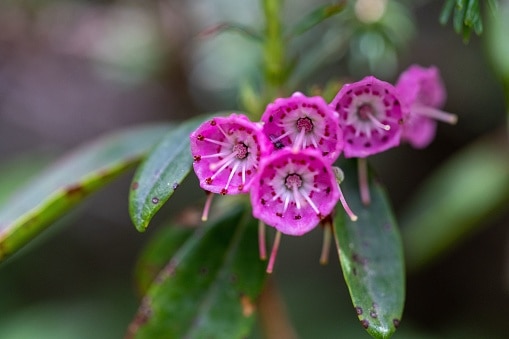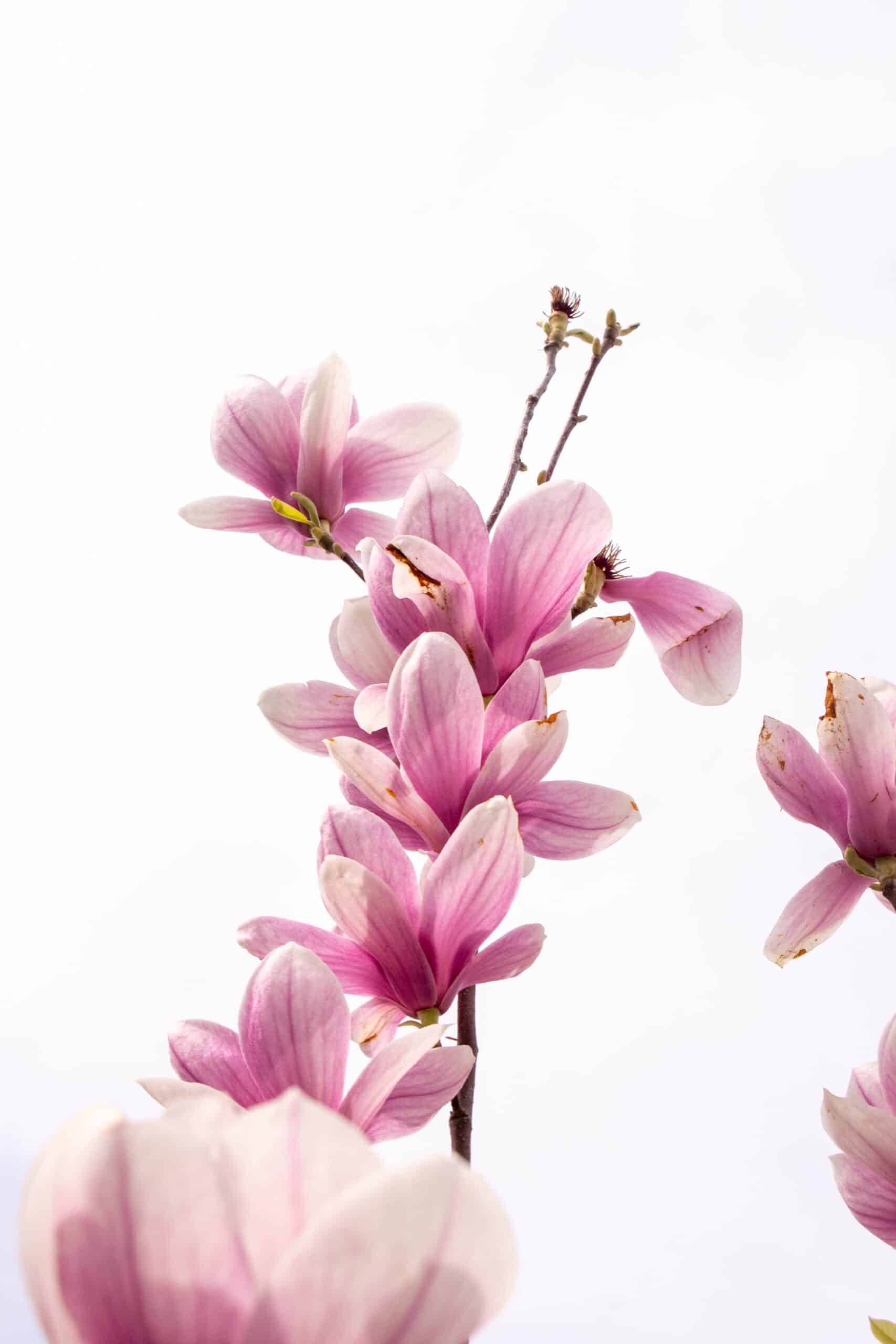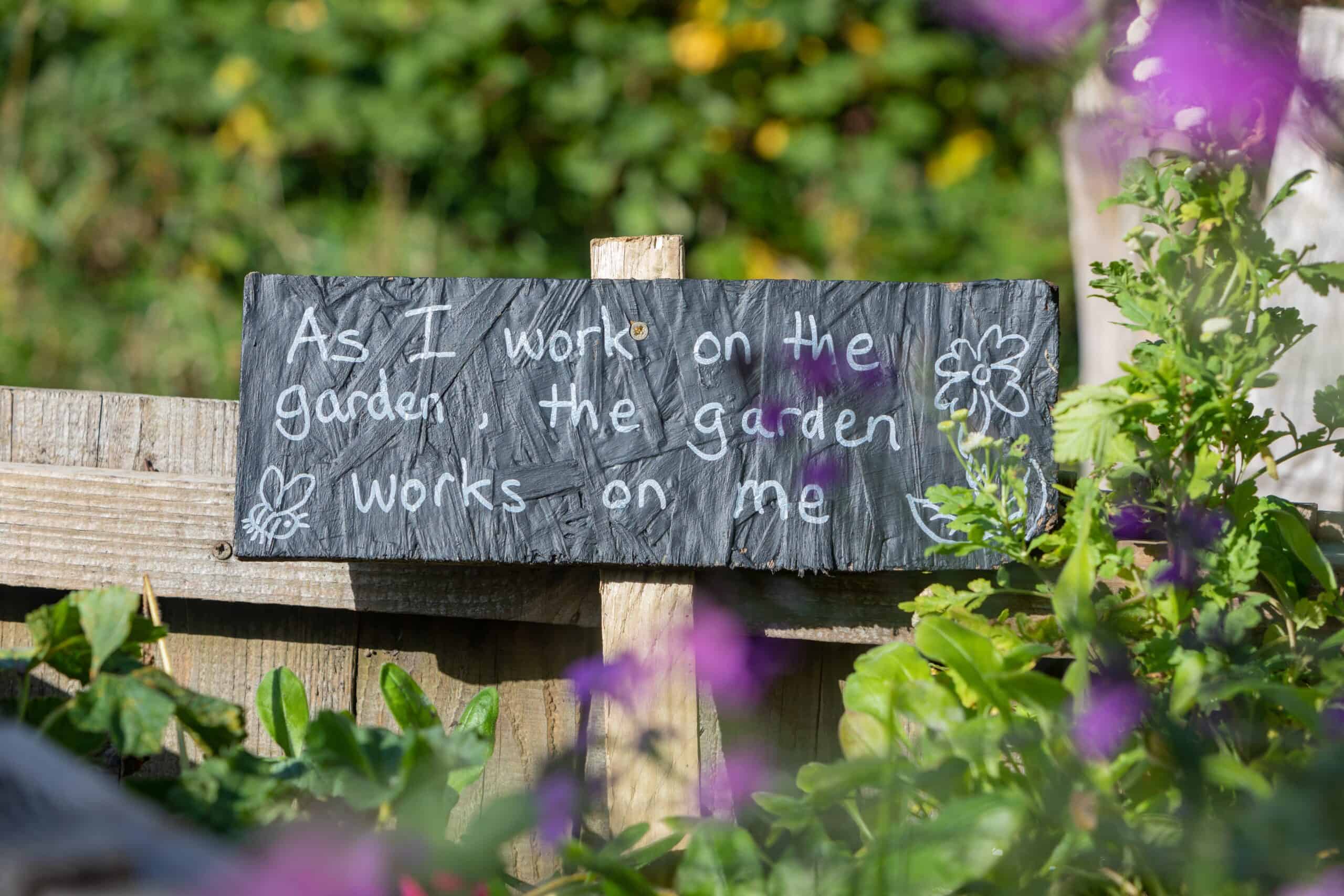Pig Laurel (Kalmia Angustifolia) is an evergreen shrub that has been Awarded the RHS garden merit. Growing to heights of two to three feet, this plant produces deep pink saucer-shaped flowers in the summertime. The deep-pink color of the petals is contrasted by the white stamens, creating an attractive blooming effect. The glossy foliage is a blue-green hue that changes to a red hue in the fall.
This bushy flower variety is suitable for both indoor and outdoor growing, especially in part shade locations and in moist soils. Deadheading the blooms will help to promote more abundant flowering the next year. Pig Laurel is a perennial that is part of the Ericaceae family.
Meaning and Symbolism
Pig Laurel generally signify a calming energy surrounding any home or workspace. Mainly, this flower signifies vibrancy and life. Moreover, Pig Laurel is also known to represent beauty, bravery and protection.
History, Mythology, and Religious Significance
Pig Laurel has been used in a variety of cultures and religious beliefs. It has been used in rituals and celebrations.
In the Native American culture, Pig Laurel is associated with physical protection. The Blackfeet would rub the leaves of Pig Laurel on their eyes and face as protection against enemies. Other North American cultures use Pig Laurels for ceremonies related to childbirth, death, and healing.
Christianity adopted a more spiritual use for this flower. Pig Laurels have been used since antiquity to illustrate triumph over darkness.
Flower Varieties and their Defining Characteristics
Pig Laurels are available in various colors, from pink to white and lavender. All of them make a great addition to your garden, as tiny flowers bloom in clusters at the end of the twigs.
Most Common Pig Laurel’s Varieties
The most popular varieties of Pig Laurel are:
- Pinkster: A pink-flowered variety with bell-shaped petals. These flowers bloom in summer and reach a height of two to three feet. The foliage is dark green with some bronze shade when young.
- Minuet: These pink flowers are held upright and double-petaled. It has glossy green foliage in winter and purple-bronze colorful foliage in the summer.
- Elizbeth: This variety has deep-pink flowers and dense, dark, green foliage. Its plants reach 1.5 to 2 feet in height and has a spread of 2 feet. The flowers burst out in mid-summer and it is one of the earliest varieties to bloom.
How to Pot and Repot
Pig Laurel is suited for container planting, but to achieve a healthy, lush-looking plant over time, proper potting is key. When planting for the first time, use a container that is slightly bigger than the current pot. This will help the plant grow and allow for root expansion. Make sure to also use a soil that has a light but rich mix, as it is important for the flower to have a balanced intake of nutrients and minerals.
When repotting, you need to dig up the plant, wash off the roots, and cut off all parts of the dead root. When ready, add some fresh soil, and place the Pig Laurel in a slightly larger pot.
Light and Soil
Pig Laurel thrives in part shade locations and for optimal growth, it should not be exposed to direct sunlight. It requires soil with good drainage and will benefit from a moist soil. If the soil has a tendency to become dry, regular watering is beneficial.
Fertilizer
In the springtime, a slow-release fertilizer can be applied for optimum plant growth. Generally, a 10-10-10 fertilizer will do the job. It is not necessary to fertilize throughout the growing season in most cases.
Temperature and Humidity
Pig Laurel is a hardy plant that can withstand temperatures that range between -20 and 30 degrees Celsius. During the hottest periods, Pig Laurel can also thrive in a warmer climate as long as it is given the right amount of light and moisture. Since this variety of flower will not do well in rapidly changing climates, ranges over a long period of time, daily temperature fluctuations should be dampened.
If exposed to high humidity in its growth environment, it is peripheral to regularly groom the plant to reduce the risk of fungus growth.
How to Prune
Pig Laurels do not need a lot of pruning but to increase its blooming effect and keep the plant healthy, regular pruning is important. Pruning should be done in the early spring once the danger of frost has passed. You should cut or thin out thin or weak branches and remove dead or damaged ones. Cut the growing tips of stems to encourage a abundant flowering.
How to Propagate
Pig Laurel can either be propagated by seed or by semi-ripe stem cuttings.
- Seed Propagation: For this method, plant the Pig Laurel seeds in a container with a light and rich potting mix. Keep the soil moist and warm, then wait for the seeds to germinate.
- Semi-ripe stem cuttings (or cutting): It is easiest to propagate this flower by semi-ripe stem cuttings. Before you start, make sure to sterilize your cutting tools. Then, take a hardwood cutting, dip it in a rooting hormone and plant it an appropriate potting mix. Make sure to also water the plant and keep it in a humid environment.
Common Pests and Diseases
Pig Laurel occasionally suffers from a variety of pests and diseases, with the most common being root rot, powdery mildew, aphids, and spider mites. Root rot can be prevented by making sure the soil is well-draining and not too wet. Powdery mildew can be treated with a fungicide. Aphids and spider mites can be wiped off the leaves, or treated using an insecticide.
Frequently Asked Questions
Q: What is the family name of Kalmia Angustifolia?
A:Kalmia Angustifolia is part of the Ericaceae family.
Q: Is Pig Laurel suitable for container planting?
A: Yes, Pig Laurel is suitable for container planting, as long as the desired container size corresponds to the plant size.
Q: Is Pig Laurel suitable for dry climates?
A: Pig Laurel grows best in humid climates, but it can survive in dry climates as long as it is given the right amount of light and moisture.
Fact Sheet
| Name | Pig Laurel – Kalmia Angustifolia |
|---|---|
| Family | Ericaceae |
| Plant Type | Perennials |
| Mature Size | 2 – 3 feet |
| Sun Exposure | Part Shade |
| Soil Type | Well-drained and Moist |
| Soil pH | Neutral (7.0) |
| Bloom Time | Summer |
| Flower Color | Deep Pink |
| Hardiness Zones | 4−9 |
| Native Area | North America |
What we love from Amazon this week
Buy these wonderful flowers directly from Amazon:












